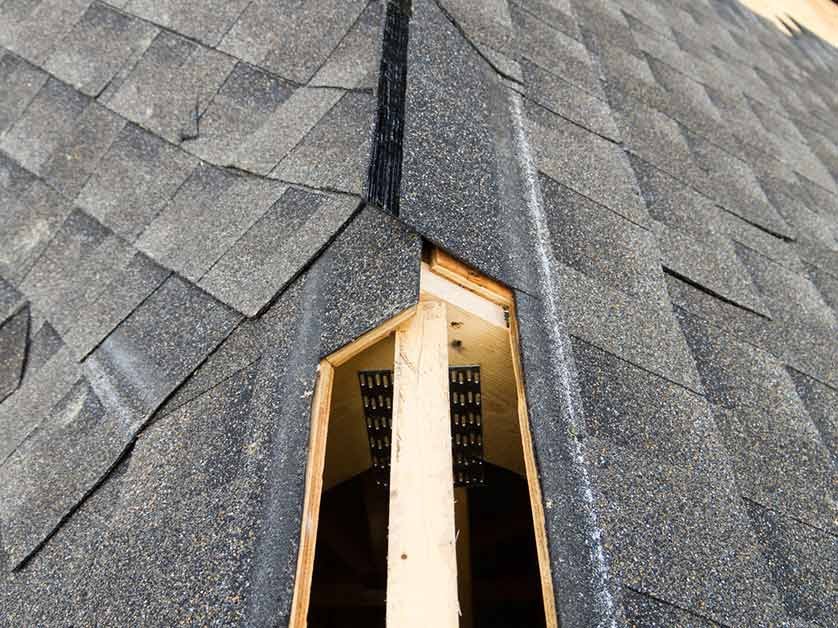A well-ventilated roof promotes indoor comfort and extends the lifespan of your roofing materials. In this post, we discuss the importance of proper roof ventilation as well as the different types of roof vents and how they affect your home’s temperature.

Understanding Roof Ventilation
Roof ventilation provides continuous air circulation through your attic or roof space, allowing moisture and heat to escape while preventing condensation and extreme temperature fluctuations. Roof vents come in various types, including ridge vents, soffit vents and gable vents. Each of these vent types serves a unique purpose to help maintain a balanced airflow throughout your roofing system. Proper ventilation is vital in regulating your home’s temperature, especially during the summer and winter seasons.
Signs of Poor Roof Ventilation
Poor roof ventilation can lead to several issues that may affect your home’s overall health and energy efficiency. Some of the most common signs of inadequate ventilation include:
- Ice Dams and Icicles. Warm air from your attic melts the snow on your roof, which refreezes at the eaves, creating a barrier that traps water. As a result, structural damage and leaks can occur.
- Mold and Mildew Growth. Excess moisture in your attic can lead to the growth of mold and mildew, which may cause health issues for you and your family.
- High Energy Bills. Inadequate ventilation can cause your heating and cooling system to work harder, increasing energy consumption and higher bills.
- Premature Roof Replacement. A poorly ventilated roof may cause roofing materials to deteriorate prematurely, requiring costly replacements sooner than expected.
Addressing Roof Ventilation Issues
A professional roof ventilation assessment and improvement is a must when dealing with roof ventilation issues to ensure your home stays comfortable and energy-efficient. As a leading provider of ventilation services in Simsbury, CT, Northeast Gutters and Remodeling offers the following:
- Roof Replacement. If your roof is damaged or deteriorating, a professional roof replacement can address this problem and help improve ventilation.
- Gutter Repair. Properly functioning gutters play a significant role in maintaining adequate roof ventilation, so repairing any damaged gutters is essential.
- Ventilation Assessment and Improvement. The experts at Northeast Gutters and Remodeling can evaluate your current ventilation system and recommend improvements to help your home stay comfortable and energy-efficient.
- Snow and Ice Removal. Removing snow and ice from your roof is essential to prevent ice dams and reduce the risk of roof damage. Regular snow and ice removal can help maintain proper ventilation and extend the life of your roofing materials, saving you time and money on costly repairs.
Proper roof ventilation is essential for maintaining your home’s health and energy efficiency. Northeast Gutters and Remodeling is here to assist if you suspect your roof has ventilation issues. Call us at (860) 899-7878 or you can fill out our online form to schedule an appointment.